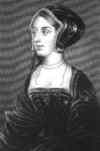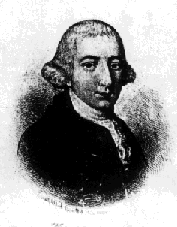The Butlers of Ballin Temple
The area has been the home of the same family for over 800 years by some counts and nearly 400 years by others. The clan may be referred to as "the Butlers of Ballin Temple" in genealogical circles. It is descended from the vikings (or Norse men) that came through Normandy, England and then Ireland in 1189. Theobald Walter, the first Butler, derived the name from the title "bouteilleur" an official, political post, like Steward or Chamberlain, which entitled the holder to 10% of all wine cargo docking in Ireland!
 The
Chief Butler of Ireland has always been seated around Kilkenny and was
in Kilkenny from 1393 till the mid 1950s when Kilkenny Castle was given
to the Irish State. The family has always had interesting ties even
from before settling in Ireland: Theobald's mother Maude de Valognes
was sister in law of the right hand man of William I (of Normandy) which
gave Theobald access to the best education and opportunities. Anne Boleyn
(pictured), mother of Elizabeth I, was daughter of Margaret Butler (and
Sir William Boleyn) who was great granddaughter of 3rd Earl of Ormonde.
Pierce Butler born at Ballin Temple in 1744 on 11 July signed the American
Constitution as Senator representing South Carolina and declined a nomination
for Vice President in 1796.
The
Chief Butler of Ireland has always been seated around Kilkenny and was
in Kilkenny from 1393 till the mid 1950s when Kilkenny Castle was given
to the Irish State. The family has always had interesting ties even
from before settling in Ireland: Theobald's mother Maude de Valognes
was sister in law of the right hand man of William I (of Normandy) which
gave Theobald access to the best education and opportunities. Anne Boleyn
(pictured), mother of Elizabeth I, was daughter of Margaret Butler (and
Sir William Boleyn) who was great granddaughter of 3rd Earl of Ormonde.
Pierce Butler born at Ballin Temple in 1744 on 11 July signed the American
Constitution as Senator representing South Carolina and declined a nomination
for Vice President in 1796.
About 1600, Edmund Butler, brother of Black Tom, the 10th Duke of Ormonde - in line from Theobald Walter), established himself in Cloughgrennan Castle which was bought from the Kavanaghs in 1490. He had acquired wealth separately from his brother through business which was often risky - he was imprisoned in Dublin Castle in 1569 but managed to escape. When he died in 1602 he left most lands, including the Cloughgrennan, Garryhunden and Ballin Temple to his fifth son, Thomas.
Thomas was granted a baronetcy in 1628 by Charles I. He established a farming estate around Carlow. Initially the family was based at Cloughgrenan and then moved to Garryhunden by the end of the 17th century. The family built their house at Ballin Temple in the 1700s and moved there about 1800.
The farm was preserved whole through primogeniture until the early 1900s
when it was broken up by waves of nationalisation.
Pierce Butler
Perhaps the most famous child of Ballin Temple is Pierce Butler, born
around 1740 the second son of the 4th Baronet. As the second son, he left
Ballin Temple on a military commission and travelled to the New World,
where he established himself as a military commander. He gave up his commission
and bought a plantation in South Carolina subsequently being elected Senator
for several terms. He signed the Constitution of the USA as a representative
for South Carolina. He was recently brought to attention in the US Presidential
election of 2000 as the Senator that pushed for the Electoral College
system in 1780s. It is this system which allowed a candidate who lost
the popular vote to be elected president.
Much is written about Pierce because of his role in establishing the
electoral college. A recent article by Melo Lennox-Conyngham,
Secretary of the Butler Society, tells part of the story here.